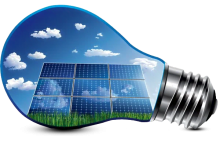The research group led by Professor Martin Green has published Version 64 of the solar cell efficiency tables. There are 19 new results reported in the new version.
JULY 3, 2024 EMILIANO BELLINI

Image: pv magazine
Share
The international research group led by Professor Martin Green from the University of New South Wales (UNSW) in Australia has published Version 64 of the “solar cell efficiency tables” in Progress in Photovoltaics.
The scientists said they have added 19 new results to the new tables since December.
Strong progress was reported across the whole range of solar cell technologies including silicon, chalcogenide, organic and perovskite.
A major new result is the 27.3%-efficient n-type silicon heterojunction interdigitated-back-contact (HBC) solar cell unveiled by Chinese manufacturer Longi in late May. “The cell, establishing a new outright record for silicon, has both polarity contacts on the rear surface restricting loss by the absence of contacts on the front illuminated surface,” the paper reads. “An all-laser patterning process was used for the more complex rear surface patterning required for such devices.”
Another result is the 34.2% power conversion efficiency that Longi achieved for a perovskite-silicon tandem solar cell in April with an updated value of 34.6% obtained in May held in reserve and reported at June’s Shanghai New Energy Conference (SNEC).
The list also includes a 25.6%-efficient large-area n-type TOPCon cell fabricated by JA Solar, a 26.8%-efficient large-area n-type silicon cell fabricated by Longi, and the 24.9% efficiency that Singapore-based Maxeon reached for its IBC solar module.
Furthermore, the tables now include the 22.6% efficiency that US-based First Solar achieved for a 0.45 cm2 cadmium-telluride (CdTe) cell, as well as several other thin-film solar cells based on kesterite (CZTSSe) or copper, gallium, indium, and diselenide (CIGS). These include reaching the 15% efficiency milestone both for small-area CZTSSe cells made by the Chinese Academy of Science and a full-sized 0.8 m2 perovskite module made by Microquanta founded by former UNSW students.
In Version 63 of the tables, released in December, the researchers added 6 new results. The group has seen major improvements in all cell categories since 1993, when the tables were first published.
The research group includes scientists from the European Commission Joint Research Centre, Germany’s Fraunhofer Institute for Solar Energy Systems and the Institute for Solar Energy Research (ISFH), Japan’s National Institute of Advanced Industrial Science and Technology, and the US National Renewable Energy Laboratory.



